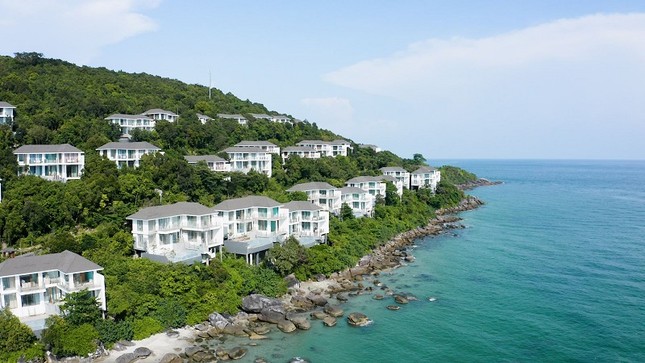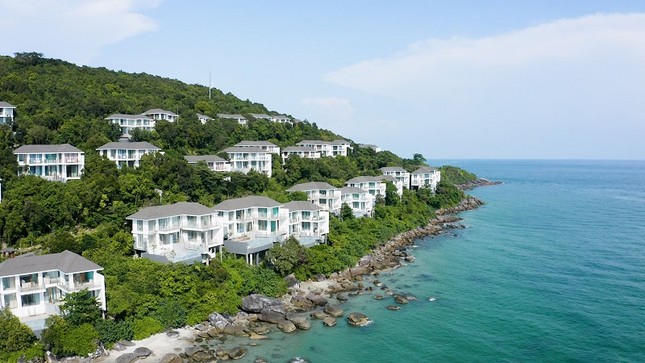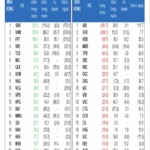Rising Supply, Improving Transactions
According to DKRA’s report, in the first quarter of this year, the market recorded over 10,670 primary products being launched, a 7% increase compared to the same period last year. Among them, the resort villa segment contributed over 150 new units, a significant rise of 57%. Central and Southern regions continued to lead the supply with a proportion of more than 76%.
The resort townhouse segment also witnessed over 3,500 primary products being launched, marking an 18% increase. However, the majority of the supply belonged to old projects, and inventory was reintroduced to the market. As for condotels, the segment that once faced immense pressure, is now witnessing slight improvements with new inventory mainly consisting of redistributed stock.
The Vietnam Real Estate Brokers Association (VARS) has recently released a comprehensive report on the resort real estate market in the first quarter of this year, reflecting encouraging signals.
Specifically, the market witnessed the launch of 950 new products, 2.4 times higher than the previous quarter and nearly three times that of the same period in 2024. However, this number is only equivalent to 18% of the same period in 2022. In terms of region, approximately 78% of the new supply came from Central Vietnam. Notably, a low-rise project in Nha Trang City, Khanh Hoa Province, accounted for 53% of the total new supply during the quarter.

Resort real estate is gradually recovering after a period of stagnation.
The newly launched projects were relatively well absorbed, with an absorption rate of 51%, equivalent to over 400 transactions. There has been an improvement in new supply, and the products launched are developed in two main directions: long-term resort villas and tourist apartments in urban areas.
VARS stated that in the first quarter, investor sentiment recovered thanks to positive signals in macroeconomics and legal policies. A series of airport and expressway projects are being invested in and expanded, improving connectivity between regions. Tourism has rebounded strongly, leading to increased occupancy rates and rental prices.
State management agencies are actively resolving bottlenecks, and there are condominium projects that have been granted pink books (ownership certificates). This has improved liquidity and prices in projects put into operation in key tourist areas such as Vung Tau, Da Nang, Nha Trang, Phu Quoc, and some provincial areas such as Hoa Binh, Vinh Phuc, and Phu Tho.
Overall, investment demand remains but is in a state of anticipation. Investors are becoming more cautious and are only willing to invest in projects with reputable developers and clear legal frameworks.
New Impetus for Resort Real Estate
During the recent 30/4-1/5 holiday, millions of tourists flocked to destinations such as Phu Quoc, Nha Trang, Cat Ba, and Ha Long.
Mr. Mauro Gasparotti, Senior Director of Savills Hotels Southeast Asia, shared that the domestic resort tourism industry has witnessed robust growth over the past 15 years. Vietnam has transformed from a “experiential” destination that tourists visit once to a “resort” destination that attracts repeat visitors.
Nowadays, tourists tend to return to various destinations in Vietnam due to the unique characteristics of these places, as well as the development of infrastructure, utilities, resorts, and direct flight routes.
This can be considered a strong step forward and testament to Vietnam’s growing competitiveness with the world’s leading tourism markets.
Many experts believe that now is an appropriate time to re-evaluate the new development model of resort real estate in the long-term cycle.
According to experts from Savills Hotels, Vietnam’s tourism industry is undergoing a significant transformation with the emergence of new business models, brands, and resorts.
Trends such as branded real estate, luxury real estate, sky bars, beach clubs, healing tourism, and all-inclusive vacations are gaining traction, catering to the diverse needs of customers and contributing to the development of tourist destinations.
Additionally, technological factors such as artificial intelligence (AI) are predicted to revolutionize the tourism industry, optimizing operational processes and personalizing experiences for tourists.
These innovations will propel the next phase of development in Vietnam’s real estate and resort industries, attracting leading brands and shaping the future of the sector. It is an opportune moment to reconsider models for the new development cycle in the long term.
Regarding the forecast for the resort real estate segment in 2025, VARS anticipates an approximate 80% increase in supply compared to last year (nearly 8,000 products), mainly in the form of serviced apartments. The completion of the legal framework, the announcement of planning schemes, the acceleration of infrastructure project implementation, and the allure of the tourism industry are supporting factors for the increase in supply entering the market. Moreover, Decree 10, which addresses the issuance of pink books for condotels and officetels, brings hope to investors and supports the recovery of this market.
Ms. Pham Thi Mien, Head of VARS’s Market Research Division, opined that the demand this year would improve in key markets with well-developed infrastructure and a stable international visitor base.
For the general market, resort real estate is yet to witness a breakthrough. Some areas still have an oversupply of high-end resorts that are not operational due to incomplete infrastructure and amenities. It may take a few more years for this market to regain the vibrancy seen in 2018.
Individual Investors Net Buy Over 500 Billion Dong as VN-Index Surges Past 1,300 Points
Individual investors posted net purchases of VND 189.3 billion, including VND 507.6 billion in net buy orders. In terms of matched orders alone, they net bought in 12 out of 18 sectors, primarily in the Real Estate sector.
Shinhan Securities and FireAnt Sign Investment and Strategic Partnership Agreement
Shinhan Securities, a leading securities company in South Korea and the parent company of Shinhan Securities Vietnam (SSV), has recently expanded its strategic investments in Vietnam. The company has acquired a significant stake in FireAnt, a prominent digital media and services company, marking a pivotal moment for both entities.
“PM Calls for Review of Officials in Areas with Slow Public Investment Disbursement”
Recapping the results of public investment in the first months, with 37 out of 47 ministries and agencies and 27 out of 63 localities having a disbursement rate below the national average, the Prime Minister requested to clarify this issue, identify the causes, and point out the difficulties, obstacles, bottlenecks, and responsibilities of the ministries and sectors. He asked, “Why, with the same conditions and policies, do some places perform well while others do not? Is it due to the people or the leaders?”
Unleashing Potential, Unblocking Resources, and Catalyzing Private Sector Development: A Visionary Approach by Prime Minister Pham Minh Chinh
“Unleashing the potential of Vietnam’s private sector: During a comprehensive address at the National Conference on the Implementation of Resolution 68 by the Political Bureau, Prime Minister Pham Minh Chinh outlined five groundbreaking directives and eight key tasks to tackle pressing issues hindering private economic development. These strategic initiatives aim to foster a vibrant and robust private sector, driving the country’s economic growth and prosperity.”





















